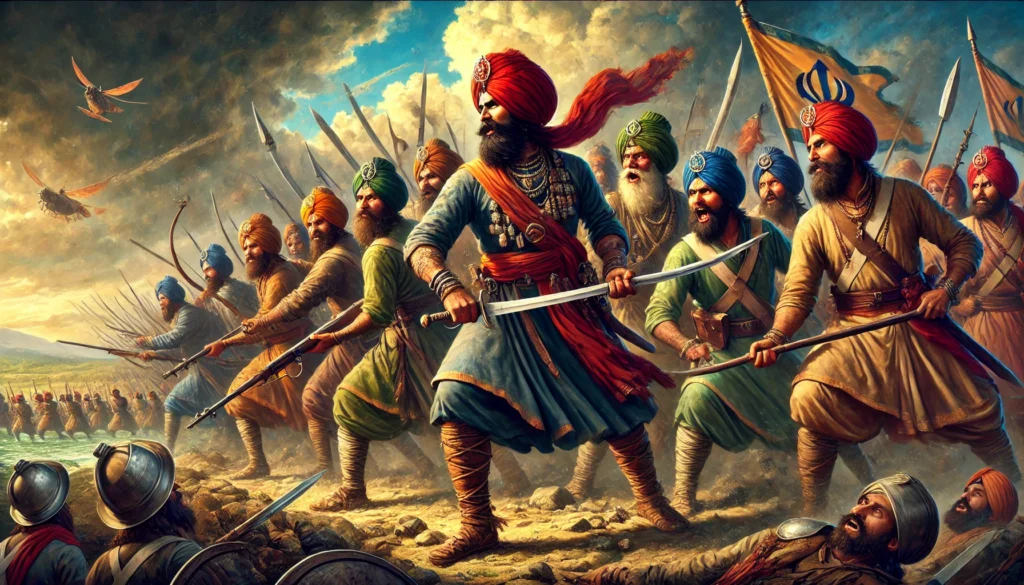The Sikh Empire: A Historical Overview
The Sikh Empire was one of the most significant and remarkable states in 19th-century South Asia, established by the Sikh community in the Punjab region. Under the leadership of powerful rulers, the empire expanded rapidly, achieving military strength, administrative organization, and territorial governance. This article provides a detailed look at how the Sikh Empire started, the battles it fought, the rulers who shaped its journey, and how it ultimately came to an end.
1. Origins and Establishment of the Sikh Empire
The Sikh Empire’s roots trace back to the establishment of Sikhism in the 15th century by Guru Nanak. The socio-political unification of the Sikhs began under the leadership of various gurus and their followers as they resisted Mughal rule and sought to create a distinct socio-religious identity. The foundation for the eventual Sikh Empire was laid in the 18th century as the Sikh Confederacies began to emerge in response to Mughal oppression.
The Rise of the Misls (Late 18th Century)
The term Misls refers to the confederacies of Sikh warriors and their leaders. These groups operated independently yet shared a common goal of fighting against Mughal rule and maintaining Sikh autonomy. During this period, the Sikh Misls became militarily strong and started consolidating their power in Punjab.
By the mid-18th century, the Sikhs had begun to form a unified political and military front. The leaders of these Misls began territorial expansion by engaging in battles with Mughal governors and local powers.
Maharaja Ranjit Singh: The Architect of the Sikh Empire
The foundation of the Sikh Empire was solidified under the leadership of Maharaja Ranjit Singh, who is widely recognized as the founder of the formal Sikh Empire.
Ranjit Singh came to power in 1799 when he captured Lahore, the capital of Punjab, establishing himself as the de facto ruler of the region. His leadership marked the beginning of centralized Sikh rule, unifying the Misls under one government.
2. The Era of Maharaja Ranjit Singh (1799–1839)
Ranjit Singh is considered one of the most pivotal figures in Sikh history. His administration was marked by political consolidation, military expansion, and the strengthening of central authority.
Ranjit Singh’s Rule and Administration
Ranjit Singh ruled the Sikh Empire from 1799 until his death in 1839. His leadership was characterized by his administrative reforms and his effective use of military power to expand and maintain his territories. Ranjit Singh is celebrated for his secular administration, which allowed Hindus, Muslims, and Sikhs to coexist peacefully under his rule.
The Formation of a Strong Military
One of Ranjit Singh’s greatest accomplishments was the establishment of a well-organized and disciplined military. He modernized the army by introducing Western-style military equipment and training methods, while also incorporating traditional Sikh fighting tactics.
Key Battles Under Ranjit Singh
- The Battle of Multan (1818): This was a pivotal engagement that expanded the Sikh Empire’s control over key areas in Punjab.
- Conquests of the North-West Frontier and Sindh: Ranjit Singh extended his empire into strategic areas of the North-West Frontier and Sindh to strengthen its boundaries.
Under his rule, the empire stretched from the Indus River in the west to the Sutlej River in the east.
Death of Ranjit Singh (1839)
Ranjit Singh died in 1839, leaving behind a powerful and prosperous empire. His death marked the beginning of a period of political instability and succession struggles within the Sikh Empire.
3. The Successors and Challenges (1839–1849)
After Ranjit Singh’s death in 1839, the Sikh Empire entered a period of political fragmentation and internal strife. A series of rulers came to power, but their reigns were marked by infighting, mismanagement, and increasing British influence.
Key Successors
- Kharak Singh (1839–1840): Ranjit Singh’s son, Kharak Singh, succeeded him, but his reign was short and tumultuous due to internal court conflicts.
- Sher Singh (1841–1843): Sher Singh faced challenges in maintaining the stability of the empire. His reign was cut short by political intrigue.
- Duleep Singh (1843–1849): The last Maharaja of the Sikh Empire, Duleep Singh, ascended to the throne at a young age. His rule was characterized by British encroachment and pressure.
The British Connection
By the mid-19th century, the British East India Company had begun to expand its influence in India. The weakening political and military structure of the Sikh Empire made it vulnerable to British intervention and colonization.
4. Key Battles of the Sikh Empire’s Decline
The decline of the Sikh Empire was driven by a series of military conflicts with the British East India Company. The empire was weakened by internal dissent, military defeats, and the inability to counter British power.
The First Anglo-Sikh War (1845–1846)
The First Anglo-Sikh War was fought between the Sikh Empire and the British East India Company in 1845–1846.
- Reasons for the Conflict: The war stemmed from a series of British interventions and strategic concerns.
- Outcome: The war ended with a decisive British victory. The Treaty of Lahore was signed, forcing the Sikhs to cede key territories and pay reparations.
The Second Anglo-Sikh War (1848–1849)
The Second Anglo-Sikh War followed shortly after the first and marked the final blow to Sikh sovereignty.
- Battle of Gujranwala and Subsequent Defeats: The Sikhs faced crushing defeats in several key engagements.
- Outcome: The British defeated the Sikhs decisively, and by 1849, the British East India Company had fully annexed the Sikh Empire into its dominion.
End of the Sikh Empire
The Second Anglo-Sikh War led to the annexation of Punjab by the British in 1849. This marked the end of the Sikh Empire and the beginning of British rule over the region.
5. The Legacy of the Sikh Empire
Although the Sikh Empire came to an end in 1849, its legacy continues to be felt to this day. The empire contributed to Indian history by promoting the idea of unity, religious tolerance, and military discipline.
- Cultural and Religious Influence: The Sikh Empire was a symbol of the unity of diverse groups under a secular and inclusive vision.
- Military Reforms: The Sikh military model influenced military strategies in the region, combining traditional methods with modern warfare tactics.
The fall of the Sikh Empire was a turning point in South Asian history, paving the way for British colonial rule. However, the spirit of the Sikh Empire continues to inspire generations and remains an integral part of Sikh identity and pride.
Key Rulers of the Sikh Empire
- Maharaja Ranjit Singh (1799–1839)
- Kharak Singh (1839–1840)
- Sher Singh (1841–1843)
- Duleep Singh (1843–1849)
These rulers were central to the establishment, expansion, and eventual decline of the Sikh Empire. Under their leadership, the Sikh Empire rose to its peak and faced challenges that would ultimately lead to its downfall.
Conclusion
The Sikh Empire remains one of the most fascinating chapters in South Asian history. Founded under the visionary leadership of Ranjit Singh, it expanded into a powerful and influential state that stood as a symbol of military strength, unity, and governance. However, internal instability, military defeats, and British intervention culminated in its annexation in 1849. Despite its fall, the legacy of the Sikh Empire continues to resonate, highlighting its historical importance in shaping Punjab, India, and South Asia.



